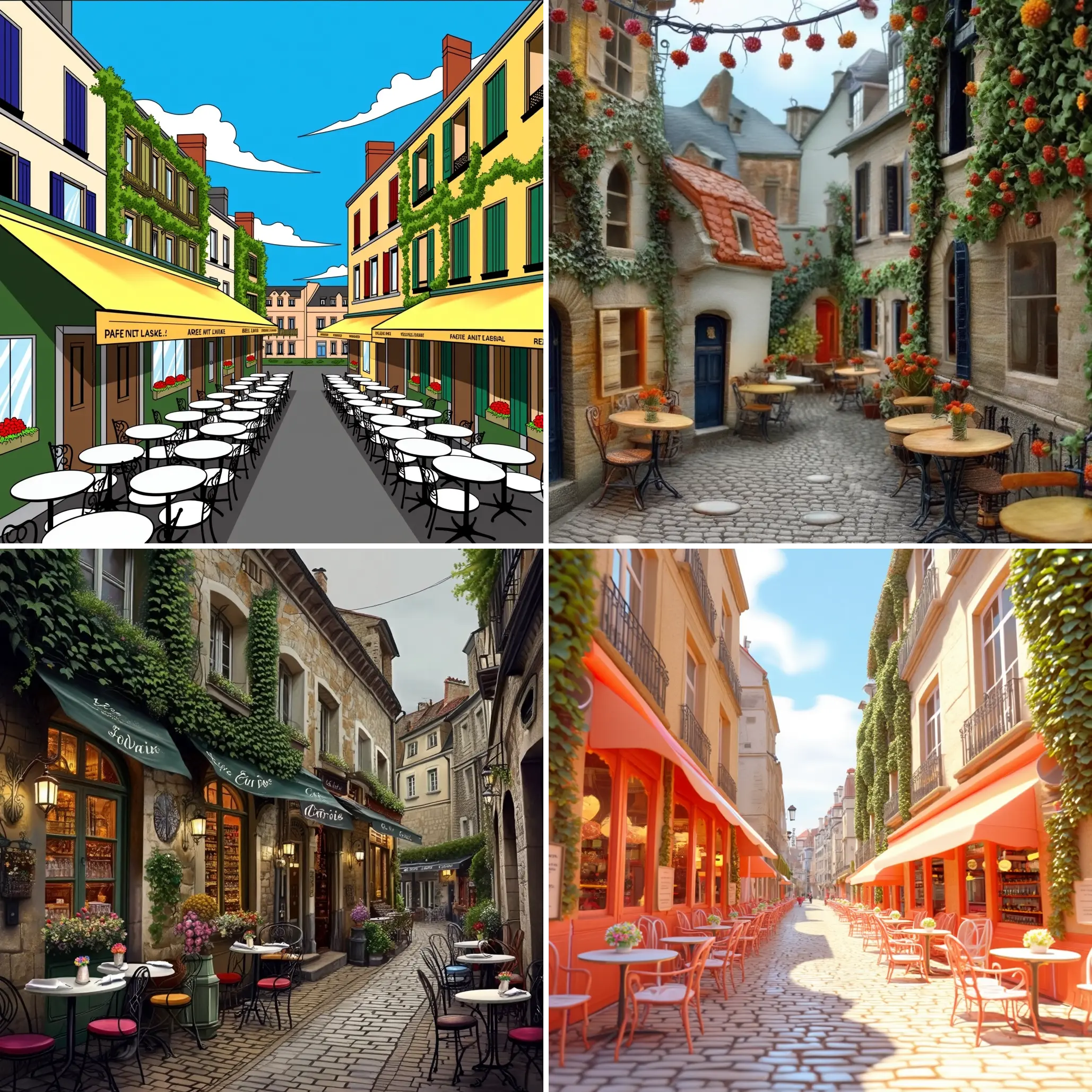ComfyUI Node: pipeOUT (Legacy)
ttN pipeOUT
Category🌏 tinyterra/legacy
TinyTerra (Account age: 905days) Extension
ComfyUI_tinyterraNodes Latest Updated
2025-03-14 Github Stars
0.49K
How to Install ComfyUI_tinyterraNodes
Install this extension via the ComfyUI Manager by searching for ComfyUI_tinyterraNodes- 1. Click the Manager button in the main menu
- 2. Select Custom Nodes Manager button
- 3. Enter ComfyUI_tinyterraNodes in the search bar
Visit ComfyUI Online for ready-to-use ComfyUI environment
- Free trial available
- 16GB VRAM to 80GB VRAM GPU machines
- 400+ preloaded models/nodes
- Freedom to upload custom models/nodes
- 200+ ready-to-run workflows
- 100% private workspace with up to 200GB storage
- Dedicated Support
pipeOUT (Legacy) Description
Extract and output pipeline components for AI art projects.
pipeOUT (Legacy):
The ttN pipeOUT node is designed to extract and output various components from a pipeline, making it easier to manage and utilize different elements in your AI art projects. This node is particularly useful for breaking down complex pipelines into individual parts, such as models, conditioning data, latent representations, and more. By using this node, you can efficiently access and manipulate these components, enhancing your workflow and enabling more precise control over your creative process. The primary goal of the ttN pipeOUT node is to streamline the extraction of key elements from a pipeline, ensuring that you have all the necessary components readily available for further processing or analysis.
pipeOUT (Legacy) Input Parameters:
pipe
The pipe parameter is a required input that represents the pipeline from which various components will be extracted. This parameter is crucial as it contains all the elements that the node will output, such as the model, conditioning data, latent representations, and more. The pipe parameter ensures that the node has access to the complete set of data needed for extraction, making it an essential part of the node's functionality.
pipeOUT (Legacy) Output Parameters:
model
The model output represents the AI model used in the pipeline. This component is essential for generating images or other outputs based on the provided conditioning data and latent representations.
pos
The pos output stands for positive conditioning data. This data is used to guide the AI model towards generating desired features or characteristics in the output.
neg
The neg output represents negative conditioning data. This data helps the AI model avoid generating unwanted features or characteristics in the output.
latent
The latent output contains latent representations or samples from the pipeline. These representations are intermediate data that the AI model uses to generate the final output.
vae
The vae output stands for the Variational Autoencoder component of the pipeline. This component is used for encoding and decoding data, playing a crucial role in the generation process.
clip
The clip output represents the CLIP (Contrastive Language-Image Pre-Training) component. This component is used for understanding and processing text and image data, enhancing the model's ability to generate relevant outputs.
image
The image output contains the generated images from the pipeline. This is the final visual output that you can use in your AI art projects.
seed
The seed output represents the random seed used in the pipeline. This seed ensures reproducibility, allowing you to generate the same output consistently.
pipe
The pipe output is the original pipeline passed as input. This output allows you to retain the complete pipeline for further use or analysis.
pipeOUT (Legacy) Usage Tips:
- Use the
pipeparameter to input a well-defined pipeline containing all necessary components for extraction. - Utilize the
model,pos, andnegoutputs to fine-tune and control the characteristics of the generated images. - Leverage the
latentandvaeoutputs for advanced manipulation and experimentation with intermediate data representations. - Ensure reproducibility by keeping track of the
seedoutput, allowing you to generate consistent results.
pipeOUT (Legacy) Common Errors and Solutions:
"Invalid pipe input"
- Explanation: This error occurs when the
pipeparameter is not provided or is incorrectly formatted. - Solution: Ensure that you pass a valid pipeline object to the
pipeparameter. Verify that the pipeline contains all necessary components.
"Missing components in pipe"
- Explanation: This error indicates that the pipeline does not contain one or more required components, such as the model, conditioning data, or latent representations.
- Solution: Check the pipeline to ensure it includes all necessary elements. If any components are missing, add them to the pipeline before passing it to the node.
"Inconsistent data types in pipe"
- Explanation: This error occurs when the data types of the components within the pipeline do not match the expected types.
- Solution: Verify that all components in the pipeline have the correct data types. Ensure that the model, conditioning data, latent representations, and other elements are properly formatted.
pipeOUT (Legacy) Related Nodes
RunComfy is the premier ComfyUI platform, offering ComfyUI online environment and services, along with ComfyUI workflows featuring stunning visuals. RunComfy also provides AI Playground, enabling artists to harness the latest AI tools to create incredible art.




